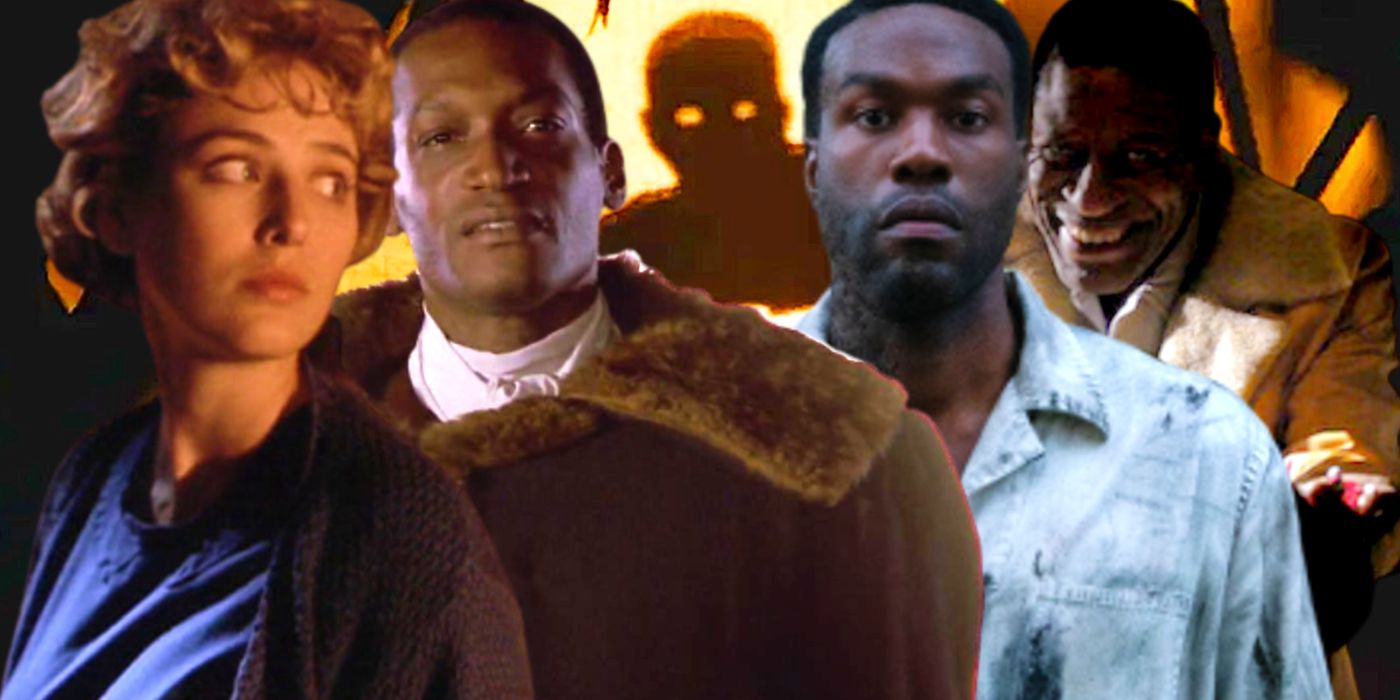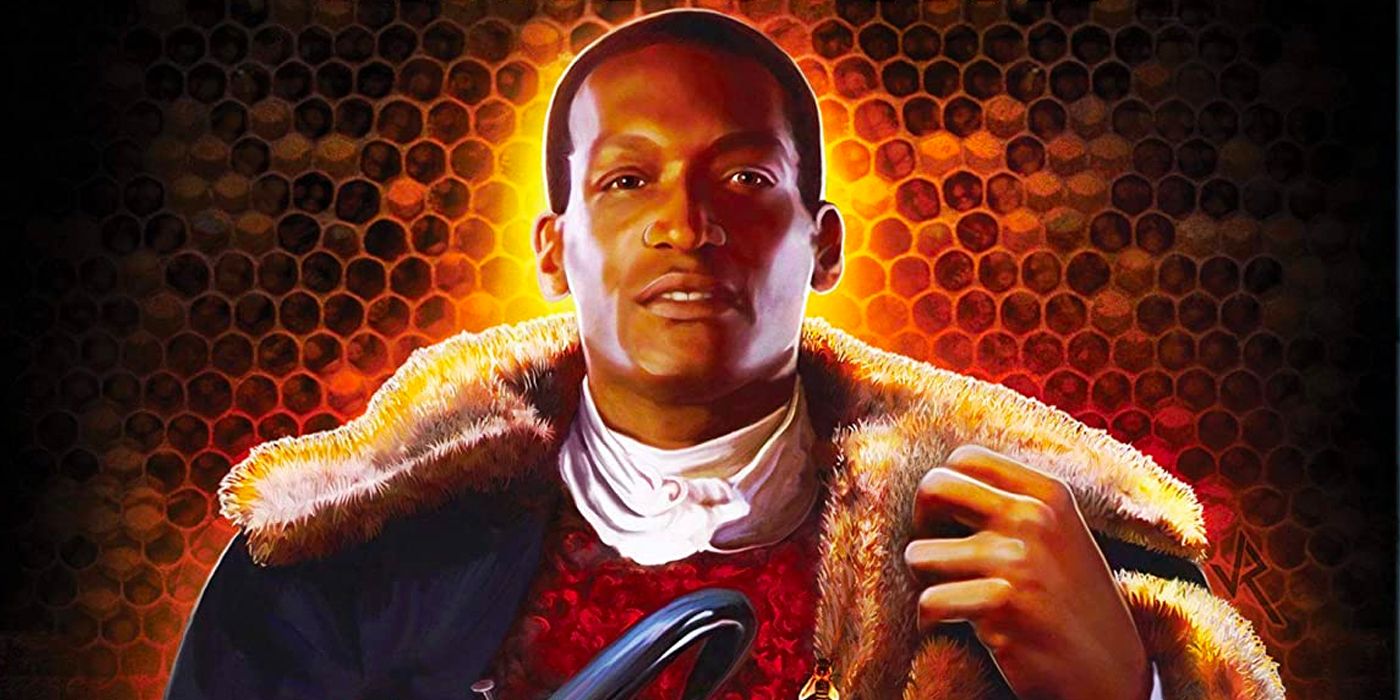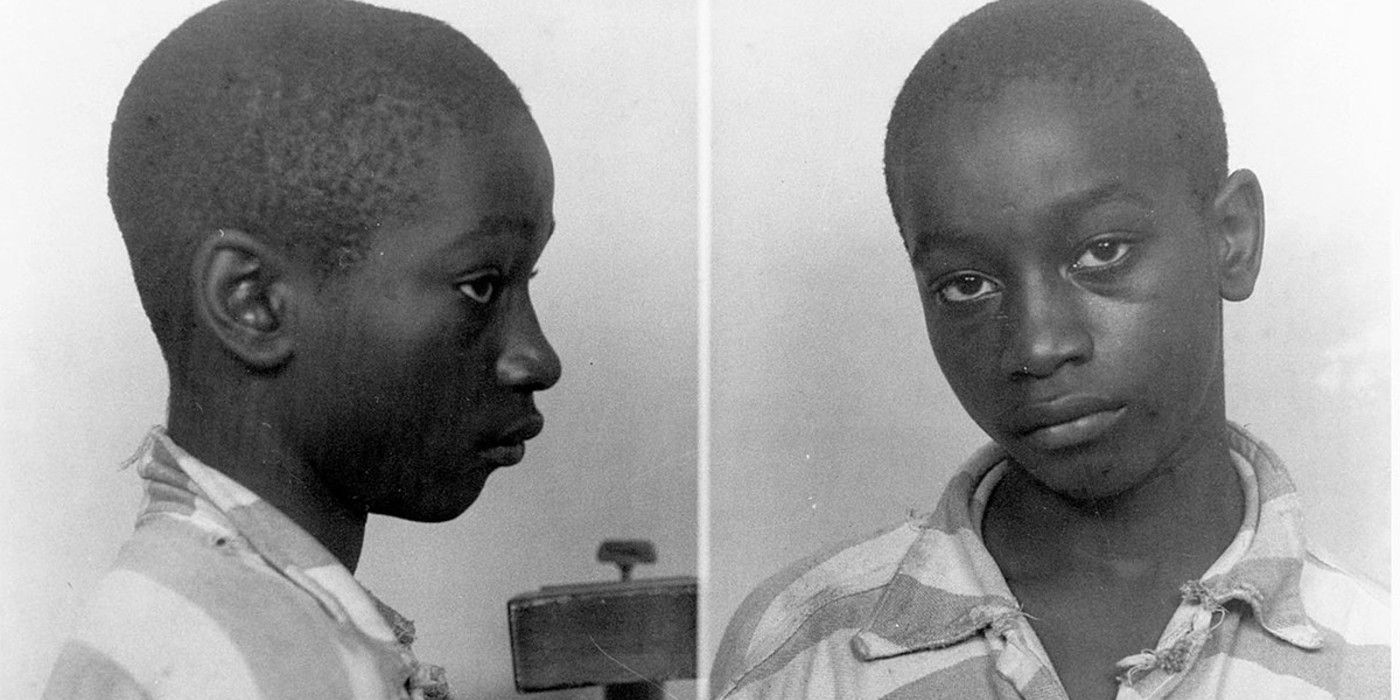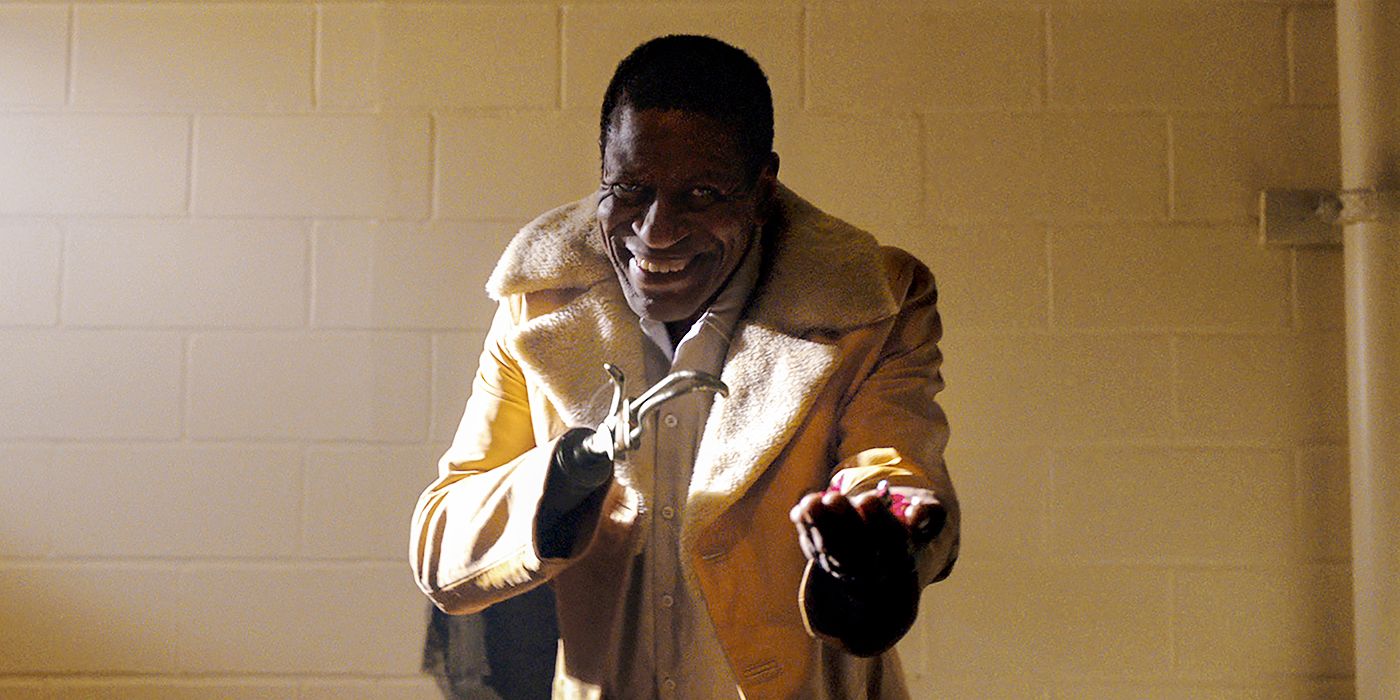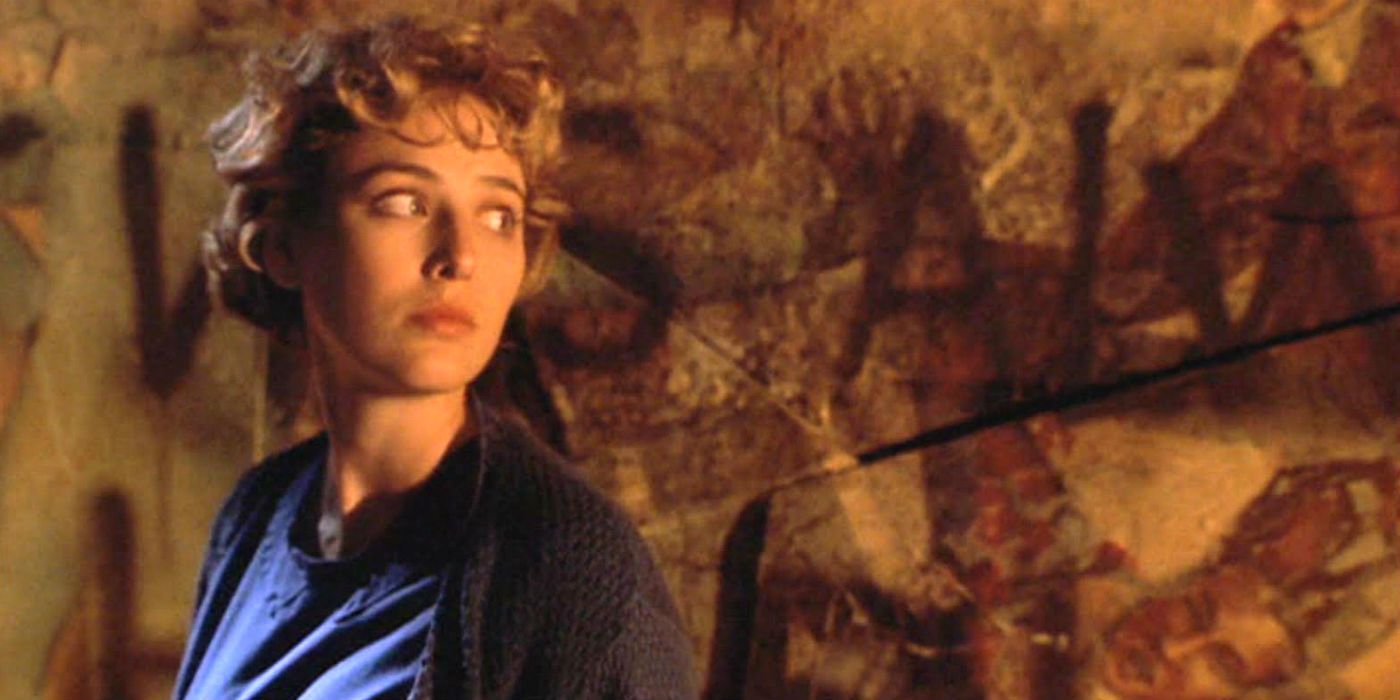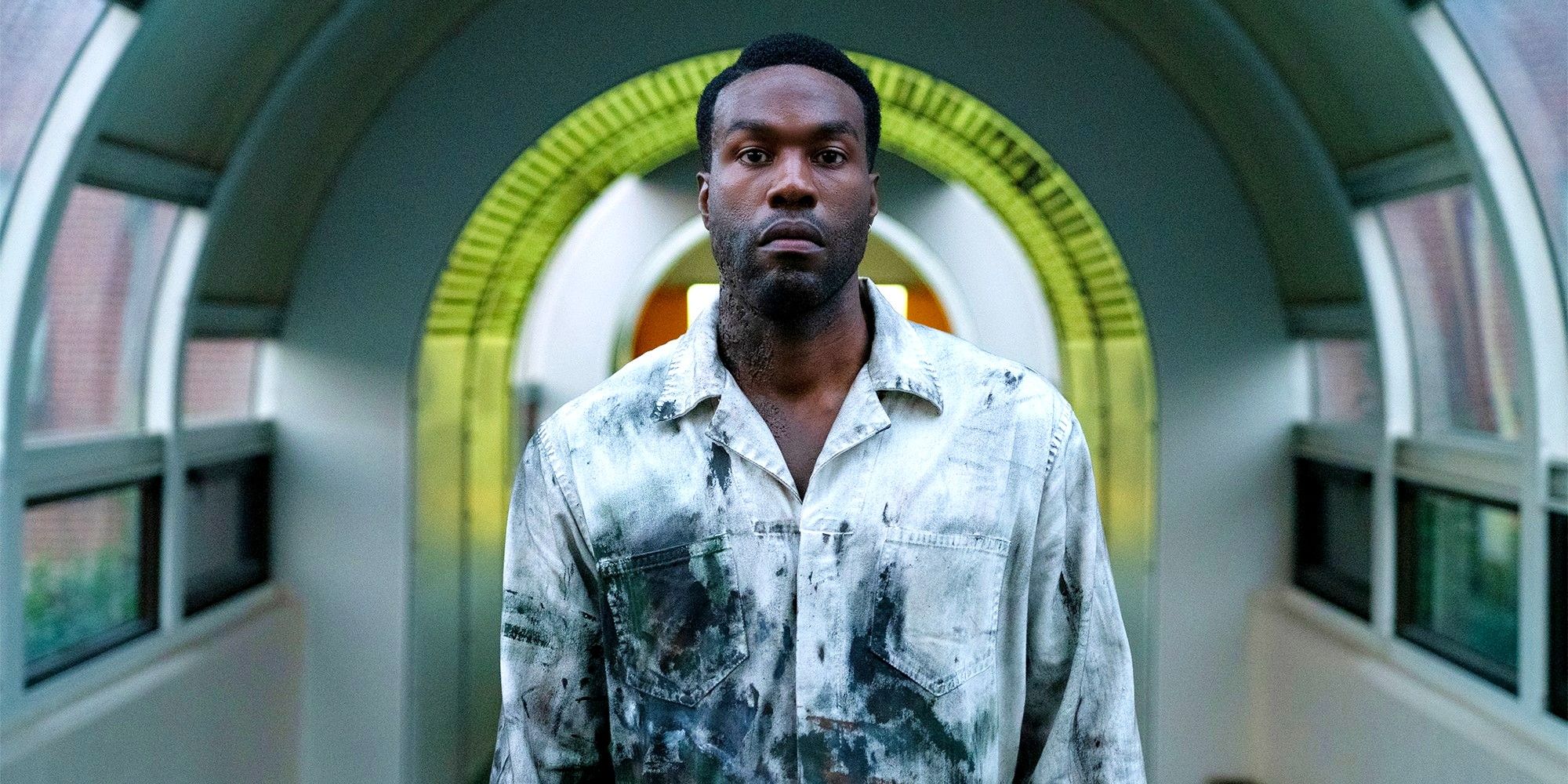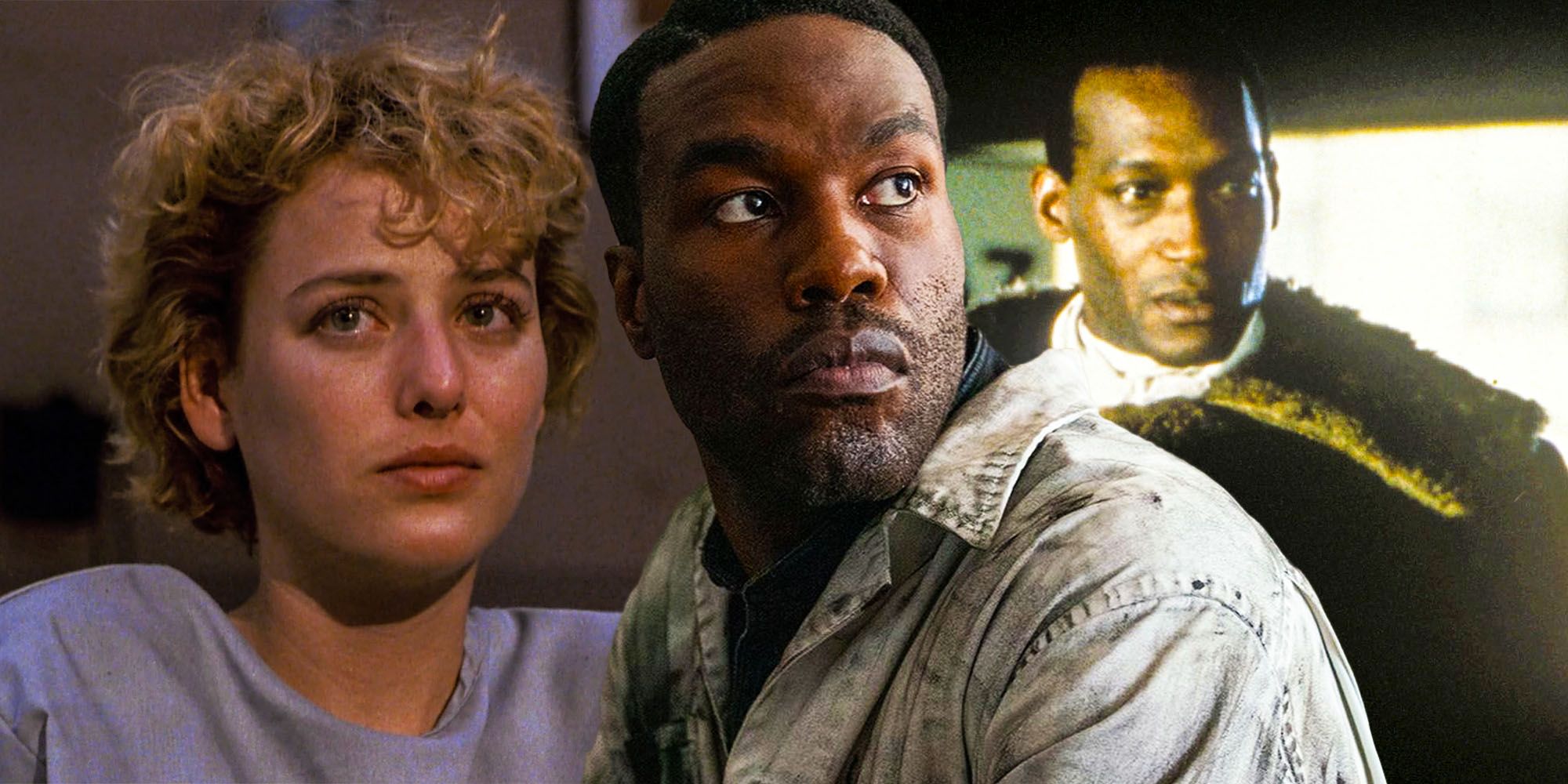Warning: Contains SPOILERS for Candyman (2021).
Candyman (2021) continues and adapts the legend of Candyman from the original 1992 movie, where Nia Dacosta includes the origins, differences, and real meanings behind the six known Candyman figures. Nia DaCosta’s Candyman is a direct sequel to Bernard Rose’s 1992 film of the same name, where she essentially excludes the events from the Candyman franchise sequels Farewell to Flesh (1995) and Day of the Dead (1999). The new Candyman (2021) follows the modern-day story of Anthony McCoy (Yahya Abdul-Mateen II), who also happened to play a significant role in the original movie nearly 30 years earlier.
DaCosta’s movie drives home the importance and themes of storytelling and lore, incorporating the events from the original Candyman (1992) and other of the villain’s historical iterations through William Burke’s explanations, Troy’s ghost story at dinner, and visually striking shadow puppetry. Only referenced in passing throughout most of the new film, Tony Todd’s Candyman appears in the final moments after Anthony’s spiritual Candyman transformation to tie the stories together and adjust what the legend means going forward. Instead of focusing on the figure of the 1992 movie, Candyman (2021) tells the tale of what the legend really means within the Black community by including more backgrounds and situations for the figure over the years.
Through Candyman’s (2021) storytelling, DaCosta introduces several new historic iterations of the horror legend over the years, crafting a deeper, more tragic tale beneath the mirror-slaying spirit. The latest Cabrini-Green victim to inexplicably be murdered by white men, Anthony becomes Candyman in the movie’s last moments, but Candyman suggests he won’t be the last. As the world knows, Black people still face injustice and brutality at the hands of the white people who exploit them, meaning the franchise will likely have to accommodate and include new settings for the next inevitable Candyman manifestation.
Daniel Robitaille
The first and most well-known Candyman is Daniel Robitaille (Tony Todd), who was notable in Candyman (1992) as the origin of the legend that has been told since 1890. Robitaille was a talented Chicago painter in the 1800s, who was originally the son of a slave who became wealthy after inventing a machine to mass-produce shoes during the Civil War. With such resources, Robitaille’s father sent him to the nicest school in America where he was known to be sophisticated, polite, and an exceptionally talented painter, specializing in portraits.
The Candyman villain's origin says that in 1890, Robitaille was hired by a wealthy white landowner to paint his young daughter, with whom he fell in love and was to have a child out of wedlock. The girl’s father discovered the affair and hired a lynch mob to chase Robitaille in Chicago where they sawed off his hand with a rusty blade and smeared him with honey to be stung to death, where a young boy tasted the honey and the town declared him “Candy Man.” The mob then hanged and burned his body on a pyre. Following his death, a legend arose in Cabrini-Green where if one spoke his name into a mirror five times and immediately turned out the lights, Robitaille would appear and murder both the conjurer and witnesses.
Young Accused Boy/George Stinney
In the ending credits for Candyman, the shadow puppetry is utilized to show the stories of each Candyman manifestation after the original Daniel Robitaille and before Anthony McCoy. One such Candyman is an unnamed young boy who was wrongly accused of assaulting a white woman and thrown in prison, where he was later killed in the electric chair. Although not explicitly revealed, many have surmised this Candyman to be telling the tale of George Stinney, a 14-year-old boy who became the youngest person ever to die by the electric chair in 1944 when he was accused of murdering two young white girls. Stinney was jailed and subsequently “confessed” after police starved and bribed him, whereafter he was wrongly convicted by an all-white jury and sentenced to death. The story is also reminiscent of the notable tragic and horrifying tale of young Emmett Till, a 14-year-old boy who was falsely accused of harassing a white woman in 1955 and subsequently brutally beaten and lynched by white men in town.
Sherman Fields
The opening sequence of Candyman (2021) introduces the first new Candyman iteration, taking place back in 1977 when a Cabrini-Green resident named Sherman Fields was wrongly murdered by police. Fields had been known around the neighborhood as “The Candyman” because he carried candies that he gave to children, though the police and many in the larger community believed him to be responsible for razor blades found in wrapped candies, which led to a manhunt for Fields after a white girl found a razor in one her candies. Young William Burke saw Fields in the wall of the Cabrini-Green laundromat, screaming when he appeared but realizing he actually meant no harm too late, as the scream still alerted the white policemen outside. The police swarmed the laundromat and beat the next Candyman Sherman Fields to death, whereafter he was retroactively exonerated for the razor-blade crimes when they were still appearing in children’s candy after he was killed. Thereafter, Fields became the next iteration of the legendary Candyman, being the physical embodiment seen in mirrors and killing those who call his name five times.
Helen Lyle
At the end of the original Candyman (1992), young white graduate student Helen Lyle takes over the Candyman moniker from Daniel Robitaille. Helen is a graduate student in 1992 Chicago who conducts research on theories about urban legends, discovering the Candyman story along the way. She and a friend jokingly call his name to no avail, whereafter Tony Todd's Candyman reveals himself to Helen, using her as a way to keep his story and image alive in the community. Candyman manipulated Helen to be caught for his murders, causing her to be arrested and institutionalized, finally escaping when she conjured the spirit. She goes to Cabrini-Green to find Candyman and save Anthony, a baby who he wants to use as a sacrifice - who would also grow up to become the new Candyman in 2021. Candyman says he will give up Anthony if Helen sacrifices herself, though he really intends to kill both of them to fuel his legend and fear in the community. Helen saves the baby from the bonfire, though dies from her wounds in the fire alongside Candyman.
After Helen Lyle's death, Candyman shows that she has taken up the same urban legend form, where if her name is called in a mirror five times, she appears and murders the summoners with a hook for a hand. The curious aspect of Helen becoming Candyman is that she’s not Black; she’s never had to deal with such injustices and can’t represent the experience of Black communities, making her tragic death and manifestation an outlier in the Candyman mythology. Turning a middle-class white woman who is continually worried about unintentionally becoming an exploiter of Black people into Candyman seems to be against the message, with her taking over the legend and spotlight from Daniel Robitaille’s Candyman. DaCosta and Peele’s Candyman wisely amends this change by including all other Candyman iterations as Black people, though still acknowledges that Helen was an ally who saved Anthony from being sacrificed.
James Byrd, Jr.
After Candyman's (2021) ending, one of the shadow puppet stories of all the Candymen seems to depict the brutal lynching of James Byrd, Jr. from 1998. The segment shows a Black man moving into a white neighborhood, whereafter he is dragged to death behind a pickup truck. This story notably corresponds to that of James Byrd, a 49-year-old man who accepted a ride from three white supremacists in Texas who then inhumanely beat him, spray-painted him, and committed countless other atrocities before brutally chaining his legs to their pickup truck and dragging him on an asphalt road for three miles for disposing of his body at a Black church.
Anthony McCoy
For Anthony, Candyman (2021) makes it appear that becoming intertwined with the lore and eventually turning into the spirit himself was always in his destiny. Anthony was first introduced in Candyman (1992) as the baby from Cabrini-Green abducted by Candyman to be killed in a fire to fuel his legend, though was saved at the last minute by Helen Lyle as she sacrificed her own life for his. In the time since Helen’s death and the Candyman (2021) events, Anthony’s mother told him the community vowed to let the legend die and leave behind the tragic events of when he was an infant. In trying to cure his painter’s block, Anthony reconnects with Cabrini-Green, becoming more and more entranced with the lore and his integral connection as he speaks with William Burke and is physically transformed after a bee sting.
Anthony is increasingly hypnotized by the Candyman legend, with William Burke finally devising to turn Anthony into the next Candyman by sawing off his arm, shoving a hook inside, and waiting for him to be gunned down by police, whereafter Candyman becomes a symbol of vengeance instead of fear. Anthony’s girlfriend Brianna arrives and is chased by Burke, who she murders in self-defense before Anthony appears, where he is shot to death by the police. Brianna then conjures Candyman, causing Anthony to reanimate as the Candyman spirit and murder all of the policemen on the scene. Anthony's Candyman then transforms into the face of Daniel Robitaille, who encourages Brianna to “tell everyone.”
The Real Meaning Behind Each Candyman
Each Candyman represents a manifestation of the brutalities, horrors, and disenfranchisement of Black people that were especially present in their corresponding eras. As each generation of Black people moves into different versions of the same old story, Candyman is reinvented accordingly. As William Burke tells Anthony McCoy in Candyman (2021), “Candyman is the whole damn hive,” meaning he’s not simply one person in a legend, he’s an aggregation of suppressed Black history and the perpetual violence against Black people. “Say My Name” as Candyman’s continual slogan is less inviting people to get themselves killed than encouraging them to tell the story of the systemic racism and brutalities Black people have endured generation after generation. Just as Black history has largely been erased from school curriculums, each Candyman asks his victims and community to keep his name and brutal story alive so as to not forget the injustices faced by Black people in America.
While the new Anthony McCoy Candyman is seeking revenge on the white people that have oppressed Black people for centuries, Tony Todd’s original Candyman was stalking Cabrini-Green’s own Black residents. This may seem like a retcon for what Candyman actually means but, in reality, the Daniel Robitaille Candyman in 1992 was manifesting the manipulated narrative created by white officials, policemen, the media, and the government that Black people were killing themselves at higher rates. By giving Candyman a different face over the years and adjusting each one’s background, the Candyman franchise is explaining that each generation of Black Americans gets their own physical manifestation and legend of the Black experience of their time.

